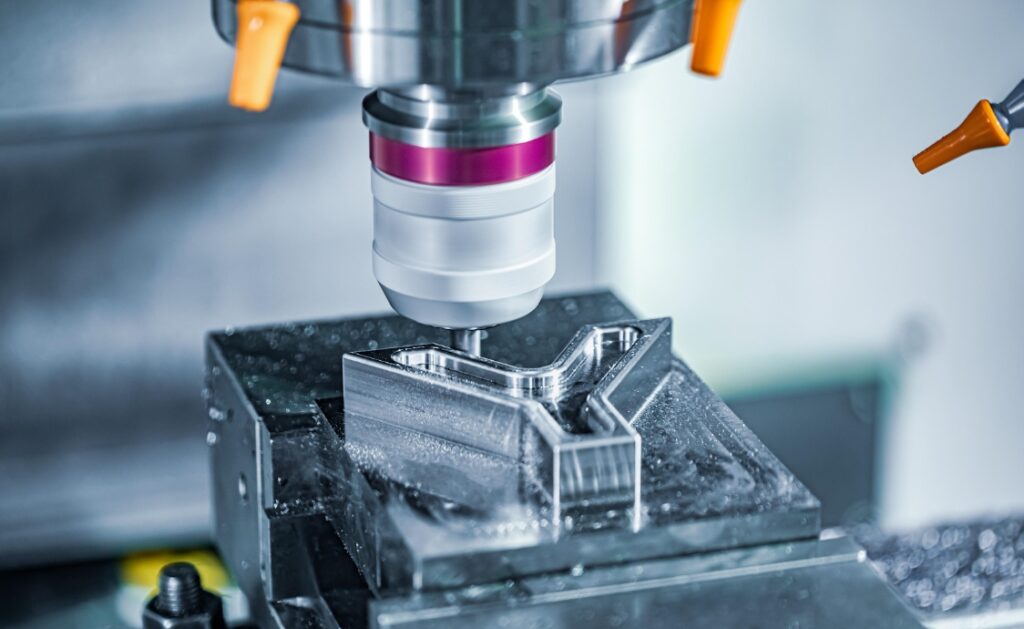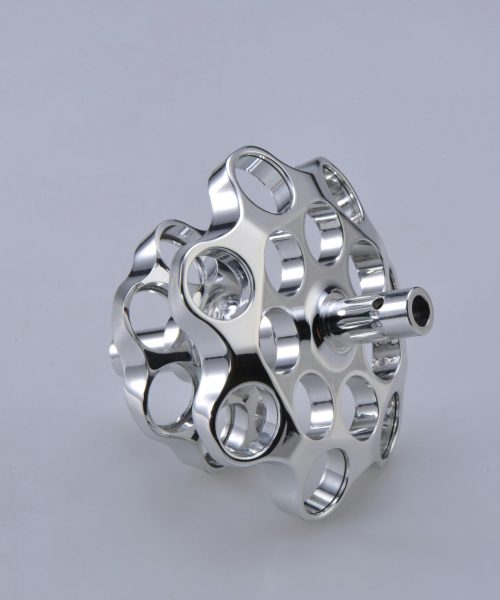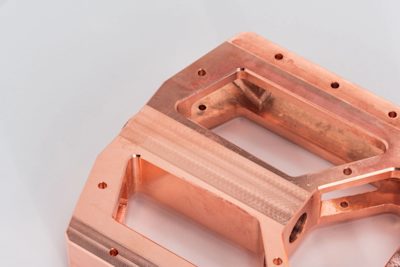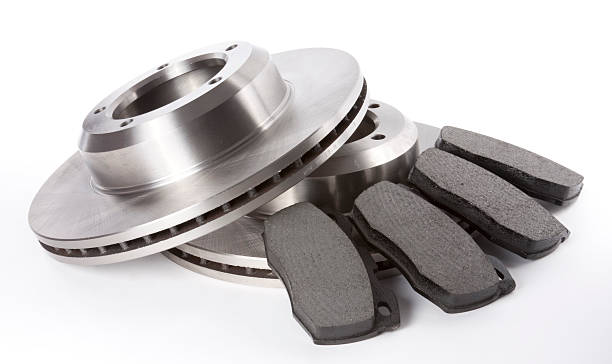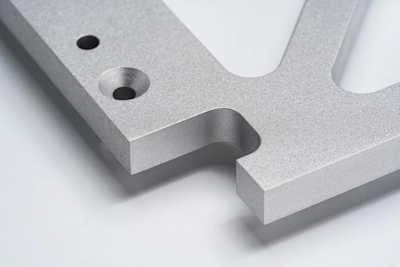Precision Engineered, Quality Assured
Introduction
CNC machining is a revolutionary manufacturing process that utilizes computer numerical control to produce parts with exceptional precision and accuracy. By leveraging computer-aided design (CAD) software, CNC machines, such as mills and lathes, are guided to remove material and shape workpieces into desired forms. This method is integral to various industries, including aerospace, automotive, medical, and electronics, where intricate and precise components are essential. The advantages of CNC machining lie in its ability to create complex geometries efficiently, operate continuously for mass production, and work with a variety of materials like metals, plastics, and composites. Beyond production, CNC machining is invaluable in prototyping, enabling rapid creation of test parts. Its significance extends to enhancing innovation and efficiency across sectors, making it a cornerstone of modern manufacturing.
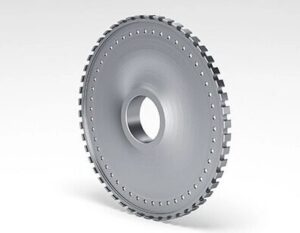

Top Materials Used In CNC Machining: A Comprehensive Guide
**CNC machining parts: Top Materials Used In CNC Machining: A Comprehensive Guide**
CNC machining is a pivotal manufacturing process that utilizes computer-controlled machinery to create precise and intricate parts. The choice of material is crucial in this process, as it directly impacts the functionality, durability, and cost-effectiveness of the final product. This guide explores the top materials commonly used in CNC machining, highlighting their properties and applications.
Aluminum is one of the most popular materials in CNC machining due to its lightweight nature, excellent corrosion resistance, and superior heat conductivity. These properties make it an ideal choice for aerospace and automotive industries, where weight reduction and thermal management are critical. Its ease of machining further enhances its popularity across various applications.


Transitioning to another widely used metal, stainless steel is renowned for its exceptional corrosion resistance and durability. It is a preferred material in medical equipment, food processing, and marine hardware, where exposure to harsh environments is common. Stainless steel’s ability to withstand wear and tear ensures long-lasting performance in demanding conditions.
Brass, an alloy of copper and zinc, is another key material in CNC machining. It offers a unique combination of strength, corrosion resistance, and ductility, making it suitable for components like bearings and gears. Its versatility in both decorative and functional applications underscores its value in various industries.
Copper, known for its outstanding electrical conductivity, is frequently used in electrical components and heat sinks. Its excellent thermal conductivity makes it a prime choice for applications requiring efficient heat transfer, despite its higher cost compared to other materials.
Plastics are also integral to CNC machining, offering non-conductive and corrosion-resistant properties. Materials like ABS, Delrin, and Nylon are chosen for their specific attributes, such as impact resistance and dimensional stability, making them ideal for consumer products and industrial components.
Titanium, with its high strength-to-weight ratio and corrosion resistance, is favored in aerospace and medical sectors. Its biocompatibility makes it suitable for medical implants, while its durability is crucial in high-performance applications.


Lastly, carbon steel, known for its strength and cost-effectiveness, is widely used in construction and machinery parts. Its versatility and affordability make it a staple in various manufacturing processes.
In conclusion, the selection of materials in CNC machining is driven by specific requirements and applications. Metals like aluminum, stainless steel, brass, copper, titanium, and carbon steel, along with plastics, each offer unique advantages, making them essential in producing high-quality, precision parts. Understanding these materials is key to optimizing CNC machining processes for diverse industrial needs.
How To Reduce Costs In CNC Machining Without Sacrificing Quality
**CNC Machining Parts: How to Reduce Costs Without Sacrificing Quality**
In the realm of modern manufacturing, CNC machining stands as a cornerstone, offering precision and efficiency in producing complex parts. However, the cost associated with this process can be prohibitive. The challenge lies in reducing expenses without compromising on quality. This article explores strategies to achieve this balance, ensuring cost-effectiveness while maintaining high standards.
**Design Optimization: The Foundation of Cost Efficiency**
The journey to cost reduction begins with design optimization. Complex designs often lead to increased machining time and costs. Simplifying designs can streamline production, reducing both time and expenses. Standardizing parts is another effective strategy, as it allows for bulk purchasing and reduces the need for custom tooling, thereby lowering costs.
**Material Selection: Balancing Cost and Performance**
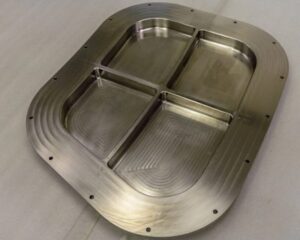

Material selection plays a pivotal role in cost management. Opting for materials that meet specifications without excessive expense can significantly reduce costs. While cheaper alternatives may be tempting, it’s crucial to ensure they do not compromise the part’s performance or longevity.
**Production Volume: Leveraging Economies of Scale**
Production volume is a critical factor in cost reduction. Higher volumes often lead to lower per-unit costs due to economies of scale. For smaller batches, collaborating with suppliers who can combine similar jobs can mitigate costs. This approach ensures efficiency without sacrificing quality.
**Tooling Costs: Maximizing Efficiency**
Tooling expenses are a substantial part of CNC machining. Utilizing existing tools instead of custom ones can save costs. Additionally, proper tool maintenance extends their lifespan, reducing the need for frequent replacements and enhancing overall efficiency.
**Manufacturing Partnerships: Strategic Collaboration**
Forming strategic partnerships with suppliers can unlock cost-saving opportunities. Suppliers often offer volume discounts and may suggest design or material changes that enhance cost-efficiency. Their expertise can provide valuable insights, optimizing the production process.
**Process Optimization: Streamlining Operations**
Optimizing the machining process is essential for cost reduction. Reducing setup times and machining cycles can significantly lower costs. Implementing lean manufacturing practices helps eliminate waste, further enhancing efficiency and reducing expenses.
**Quality Control: Maintaining High Standards**
Even as costs are reduced, quality must remain paramount. Investing in automation and efficient inspection processes ensures that parts meet required standards without additional costs. Quality control is non-negotiable, safeguarding both reputation and customer satisfaction.
**Conclusion: Achieving Cost-Effective Excellence**
In conclusion, reducing costs in CNC machining without sacrificing quality is achievable through strategic approaches. Design optimization, material selection, production volume, tooling efficiency, manufacturing partnerships, process optimization, and stringent quality control collectively contribute to a cost-effective solution. By embracing these strategies, manufacturers can maintain high standards while enhancing profitability, proving that cost reduction and quality are not mutually exclusive.
The Importance Of Surface Finishing In CNC Machining
**CNC Machining Parts: The Importance of Surface Finishing in CNC Machining**
In the realm of CNC machining, surface finishing plays a pivotal role in enhancing both the functionality and aesthetics of manufactured parts. This process, which involves treating the surface of a machined component, is essential for achieving desired properties such as improved performance, durability, and visual appeal. Without proper surface finishing, parts may have rough surfaces that can lead to wear and tear, potentially resulting in premature failure. Thus, surface finishing is crucial for ensuring that CNC-machined parts meet both functional and aesthetic requirements.
Surface finishing encompasses a variety of methods, each tailored to specific needs. Techniques such as grinding and polishing are employed to create smoother surfaces, which are particularly important for moving parts that require reduced friction. On the other hand, processes like anodizing and coating apply protective layers to prevent corrosion and enhance wear resistance. Each method serves a distinct purpose, contributing to the overall quality and longevity of the final product.
The impact of surface finishing on the quality of CNC-machined parts cannot be overstated. In industries such as aerospace and automotive, where precision is paramount, surface finish can be a critical factor. A subpar finish may fail to meet stringent industry standards, potentially leading to part failure and serious consequences. Therefore, meticulous attention to surface finishing is essential to ensure compliance with quality benchmarks.
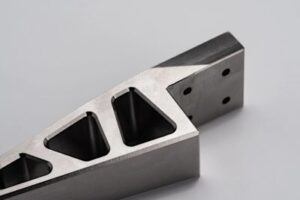

Furthermore, surface finishing significantly influences the assembly and performance of machined components. Smooth surfaces facilitate better fitment between parts, reducing the risk of jamming and excessive wear. This is particularly vital in machinery with moving components, where reduced friction can enhance efficiency and minimize the need for lubrication. Consequently, surface finishing directly impacts the operational performance and lifespan of the final product.
In addition to functional benefits, surface finishing plays a role in corrosion resistance, especially in harsh environments. Metals, when exposed to corrosive elements, can weaken over time. Applying protective coatings through methods like anodizing or electroplating can mitigate this issue, thereby extending the lifespan of the component.
Aesthetic considerations also highlight the importance of surface finishing. In consumer products, the appearance of a part can significantly influence user perception. A well-finished surface can elevate the product’s professional appeal, enhancing its marketability and consumer satisfaction.
In conclusion, surface finishing is an integral aspect of CNC machining, contributing to the functionality, durability, and visual appeal of manufactured parts. Neglecting this step can lead to compromised performance and reduced product lifespan. As industries continue to demand higher standards, the significance of surface finishing will only continue to grow, underscoring its essential role in modern manufacturing.
Conclusion
CNC machining is a pivotal technology in modern manufacturing, renowned for its precision, versatility, and efficiency. It leverages computer-controlled machinery to produce high-quality parts with intricate designs, catering to industries such as aerospace, automotive, medical devices, and electronics. The process excels in handling various materials, from metals to plastics, ensuring consistent and complex components. Its integration with CAD and CAM software streamlines the design-to-production process, minimizing errors and enhancing productivity. While initial investments in machinery and training can be substantial, CNC machining offers long-term benefits through reduced material waste, smooth surface finishes, and the ability to adapt to design changes efficiently. Its role in automation allows for continuous operation, increasing throughput and reducing labor costs. Thus, CNC machining is integral to advancing manufacturing, driving innovation and efficiency across diverse sectors.
Get custom CNC machining parts with precision and quality. Contact us today!

